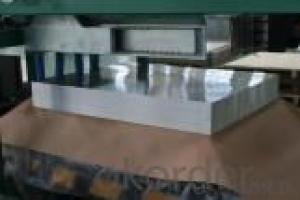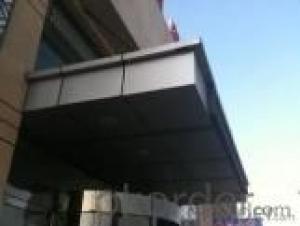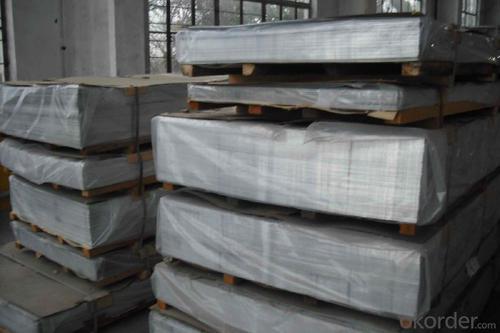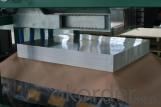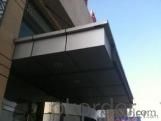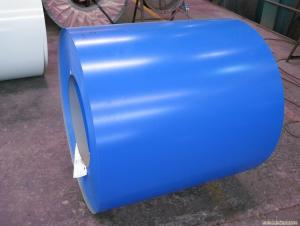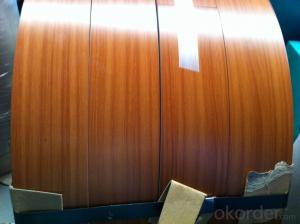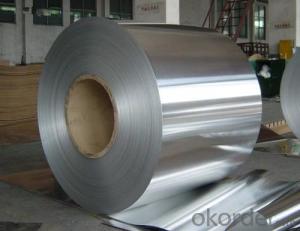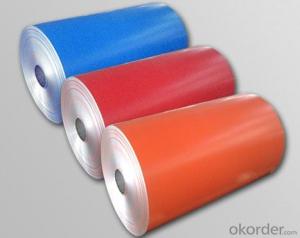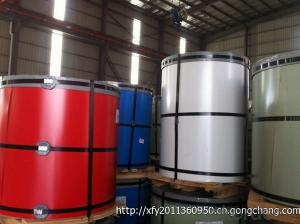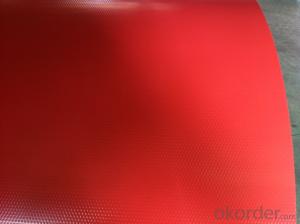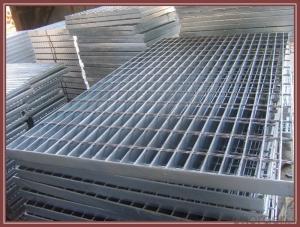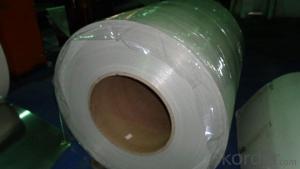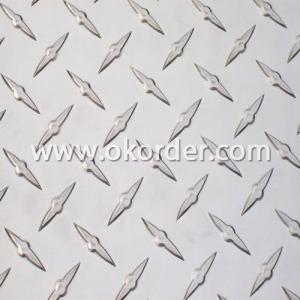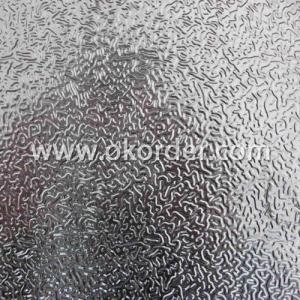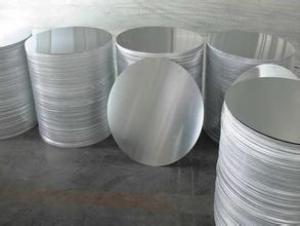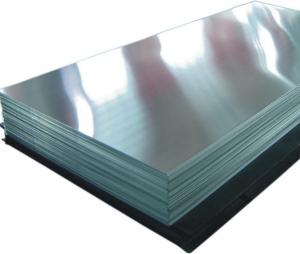4x8 Sheets of Aluminum Color Coating Coil for Aluminum Composite Panel
- Loading Port:
- Shanghai
- Payment Terms:
- TT OR LC
- Min Order Qty:
- 1 m.t.
- Supply Capability:
- 2000 m.t./month
OKorder Service Pledge
OKorder Financial Service
You Might Also Like
Specification
Structure of Prepainted Aluminium Coil PPGL Description:
1)Alloy: 1050,1060, 1100,etc.
2)Temper:O, H12,H16, H18,H22,H24, H26 etc.
3)Surface treatment:polished,anodized,mill finishing
Main Features of Aluminium Coil PPGL:
Packing:First, plastic cloth; Second, Pearl Wool ; Third, wooden cases with dry agent ,without fumigation,wooden pallets
Images of Aluminium Coil PPGL:
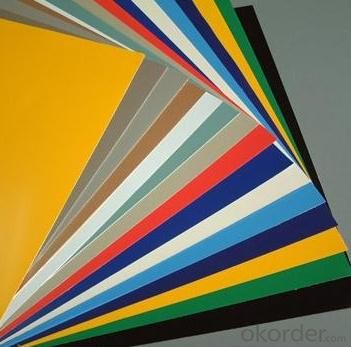
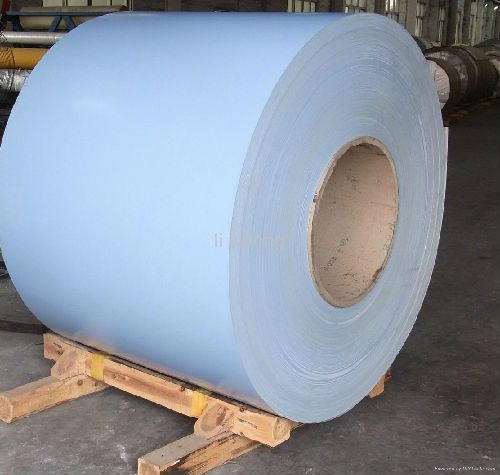

Aluminium Coil PPGL Specification:
Product Name | Aluminum Coil |
Alloy | A1100,A3003,A1050,A8011,A3105,A5005 etc |
Thickness | 0.022mm to 3.0 mm |
Width | Standard width:1240mm; 1200mm |
All width: 30mm - 1600mm | |
Diameter | out dia:1200mm |
Interior dia: 405mm,505mm | |
Weight | 2.5 T/coil,3.0 T/coil |
Coating | PE,PVDF,ACRYLIC |
Surface | Embossed, mill finish, coated; aluminum gutter coil |
Color | AS to all RAL color |
Gloss | 10-90%(EN ISO-2813:1994) |
Coating Thickness | PE: more than 18 micron |
PVDF: more than 25 micron | |
Coating Hardness (pencil resistance) | More than 2h |
Coating adhesion | 5J(EN ISO-2409:1994) |
Impact Resistance | No peeling or cracking(50 kg/cm,ASTMD-2794:1993) |
Flexibility (T-bend) | 2T |
MEK resistance | More than 100 |
FAQ of Aluminium Coil PPGL:
1.Superior quality of raw material.
2.Reasonable and stable chemical composition.
- Q: Are aluminum sheets suitable for pharmaceutical packaging?
- Yes, aluminum sheets are suitable for pharmaceutical packaging. Aluminum is widely used in the pharmaceutical industry due to its unique properties. It is a lightweight material that provides excellent protection against moisture, oxygen, and light. This makes it ideal for packaging sensitive pharmaceutical products that require a high level of protection and stability. Aluminum sheets are also highly resistant to corrosion and have good heat conductivity, allowing for efficient heat sealing during the packaging process. Furthermore, aluminum is non-toxic and non-reactive, ensuring the safety and integrity of the pharmaceutical products. Overall, aluminum sheets are a reliable and commonly used material for pharmaceutical packaging.
- Q: Can aluminum sheets be used for food processing conveyors?
- Yes, aluminum sheets can be used for food processing conveyors. Aluminum is a popular choice for food processing equipment due to its many desirable properties. It is lightweight, corrosion-resistant, and has excellent thermal conductivity. These features make aluminum sheets ideal for use in food processing conveyors, as they can withstand the demanding environment of food production while ensuring efficient and safe transportation of food products. Additionally, aluminum is easy to clean and maintain, making it a hygienic choice for food processing applications.
- Q: Are aluminum sheets suitable for interior design applications?
- Yes, aluminum sheets are suitable for interior design applications. Aluminum is a versatile and durable material that can be used in various ways to enhance the aesthetics of interior spaces. It can be easily shaped, cut, and manipulated to create unique and modern designs. Aluminum sheets are available in different finishes, such as brushed, polished, or textured, which allows for a wide range of design possibilities. One of the main advantages of using aluminum sheets in interior design is their lightweight nature. This makes them easy to handle and install, reducing labor and transportation costs. Additionally, aluminum is resistant to corrosion, making it suitable for areas with high humidity or moisture, such as bathrooms or kitchens. Aluminum sheets can be used for various applications in interior design, including wall cladding, ceiling panels, room dividers, furniture, and decorative elements. They can be painted or coated in different colors to match any interior design scheme. Aluminum sheets can also be perforated or engraved to create patterns or intricate designs, adding a unique visual appeal to the space. Furthermore, aluminum is a sustainable material as it is highly recyclable. Its recycling process requires only a fraction of the energy needed to produce new aluminum, making it an eco-friendly choice for interior design applications. In conclusion, aluminum sheets are highly suitable for interior design applications due to their versatility, durability, lightweight nature, resistance to corrosion, and ability to be shaped and manipulated. They offer a wide range of design possibilities and can be used for various applications, making them a popular choice among designers and architects.
- Q: after putting aluminum sheet into the area between magnet and iron products, could magnet attract iron again?
- magnet can attract iron if the aluminum sheet isn't too thick. Because aluminum can't cut off magnetic line of force, unless aluminum sheet's thickness surpass the range of magnetic attraction.
- Q: 3003H24 alloy aluminum plate refers to what kind of aluminum plate?
- 3003H241, the first to 3 words led by the expression is: manganese as the main alloying elements of aluminum alloy;2, second, 0 words indicate that the aluminum alloy, its impurity limit content without special control;3, third, fourth digit 03 indicates modification alloy, not too much actual connotation;4. H means products that increase strength by working hardening;5, 24 in 2 said the work hardening and incomplete annealing state (i.e. the degree of work hardening than product requirements after incomplete annealing strength is reduced to the specified index products) 4 means O is intermediate state to the 8 state that value.
- Q: Are aluminum sheets suitable for electronic components?
- Indeed, electronic components can be accommodated with aluminum sheets. Aluminum, a metal that is both lightweight and durable, exhibits exceptional electrical conductivity. It finds frequent application in the fabrication of electronic housings, heat sinks, and circuit boards. Due to its malleability, aluminum sheets can be effortlessly machined, molded, and joined together, rendering them adaptable for a multitude of electronic purposes. Furthermore, aluminum possesses commendable thermal conductivity, enabling efficient heat dissipation, a vital feature for averting overheating in electronic devices.
- Q: Can aluminum sheets be used for protective barriers?
- Yes, aluminum sheets can be used for protective barriers. Aluminum is a lightweight and durable material that offers good resistance against impact, corrosion, and fire. It can be easily fabricated into sheets, making it suitable for various applications such as protective barriers in construction, transportation, and industrial settings.
- Q: Can aluminum sheet be used for cookware?
- Indeed, cookware can indeed employ aluminum sheets. Aluminum, being renowned for its superb heat conductivity, facilitates even heat dispersion and rapid heating. It possesses the attributes of being lightweight, long-lasting, and impervious to rust and corrosion. Moreover, aluminum cookware is reasonably priced and comparatively effortless to maintain. Nevertheless, pure aluminum proves to be a malleable metal, thus necessitating its amalgamation with other substances such as stainless steel or nonstick coatings to fortify its endurance and nonstick qualities.
- Q: why does aluminum sheet not react with sulfuric acid nut react with hydrochloric acid?
- aluminum reacts with hydrochloric acid,generating aluminium chloride which can dissolve in water. but aluminum reacts with sulfuric acid, generating aluminum sulfate which can't dissolve in water and will generate aluminum sulfate, a layer of protective film, preventing aluminum from reacting with sulfuric acid, so there is no significant phenomena.
- Q: How does the formability of aluminum sheet vary with different alloys?
- The formability of aluminum sheet can vary significantly with different alloys. Some aluminum alloys have excellent formability, allowing for easy bending, shaping, and forming without cracking or tearing. These alloys are commonly used in applications that require complex shapes or intricate designs. On the other hand, certain aluminum alloys may have lower formability, making them more difficult to shape without the risk of deformation or failure. The choice of alloy will depend on the specific requirements of the application and the desired level of formability needed.
Send your message to us
4x8 Sheets of Aluminum Color Coating Coil for Aluminum Composite Panel
- Loading Port:
- Shanghai
- Payment Terms:
- TT OR LC
- Min Order Qty:
- 1 m.t.
- Supply Capability:
- 2000 m.t./month
OKorder Service Pledge
OKorder Financial Service
Similar products
Hot products
Hot Searches
Related keywords

